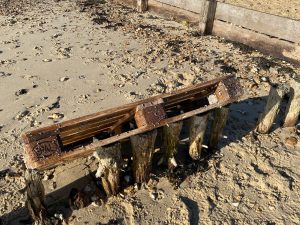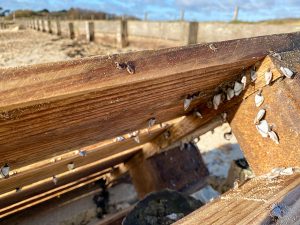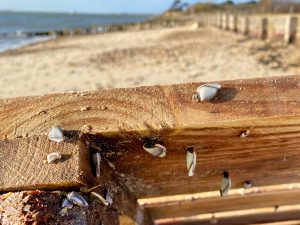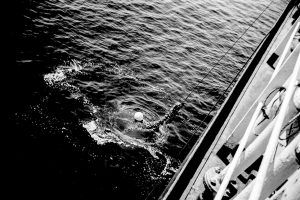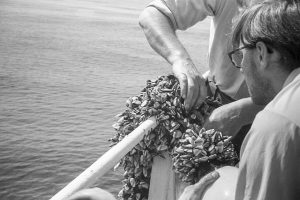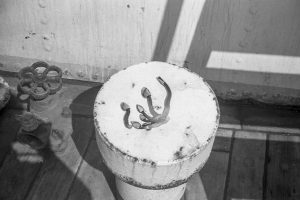9th January: Goose Barnacles!
![]() While on beach patrol from NCI Stone Point on the morning of Monday, 9th January, I came across a pallet wedged on the remains of a breakwater near the high tide mark. I went to move it up past the high tide line but found it was well wedged and partially buried. If I had freed it, I was not sure I could get it far over the wood sea defence at the top of the beach, so I decided to leave it undisturbed.
While on beach patrol from NCI Stone Point on the morning of Monday, 9th January, I came across a pallet wedged on the remains of a breakwater near the high tide mark. I went to move it up past the high tide line but found it was well wedged and partially buried. If I had freed it, I was not sure I could get it far over the wood sea defence at the top of the beach, so I decided to leave it undisturbed.
I was surprised to see that, although the pallet looked quite new, it already had some small goose barnacles growing on it. I’ve previously associated goose barnacles with object which had been floating for a long time in the open ocean since I first saw them on a drifting yacht mooring picked up by the research ship RRS Discovery back in 1970… these are some photos I took at the time:
The barnacles do have a remarkable resemblance to Barnacle Geese, and one can perhaps understand the legend that the barnacles were a young stage of the geese!
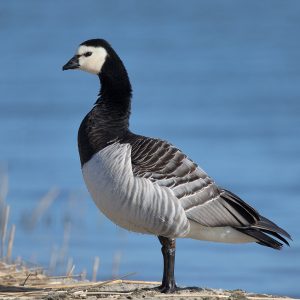
Barnacle Goose (photo: Andreas Trepte, CC BY-SA 2.5, via Wikimedia Commons)
Apparently the Brent (or “Brant”) geese that we see during winter months at Lepe and Calshot were once thought to be the same species as the Barnacle Geese and hence also derived from barnacles. Both species of geese breed in the high arctic and only appear in the UK during winter so, before bird migration was understood, there were no observations of the geese reproducing like other birds by building nests and laying eggs.
However, perhaps I’m too cynical, but I do wonder if the barnacle legend was created by monks so that the geese could be classed as fish and eaten on Fridays!

